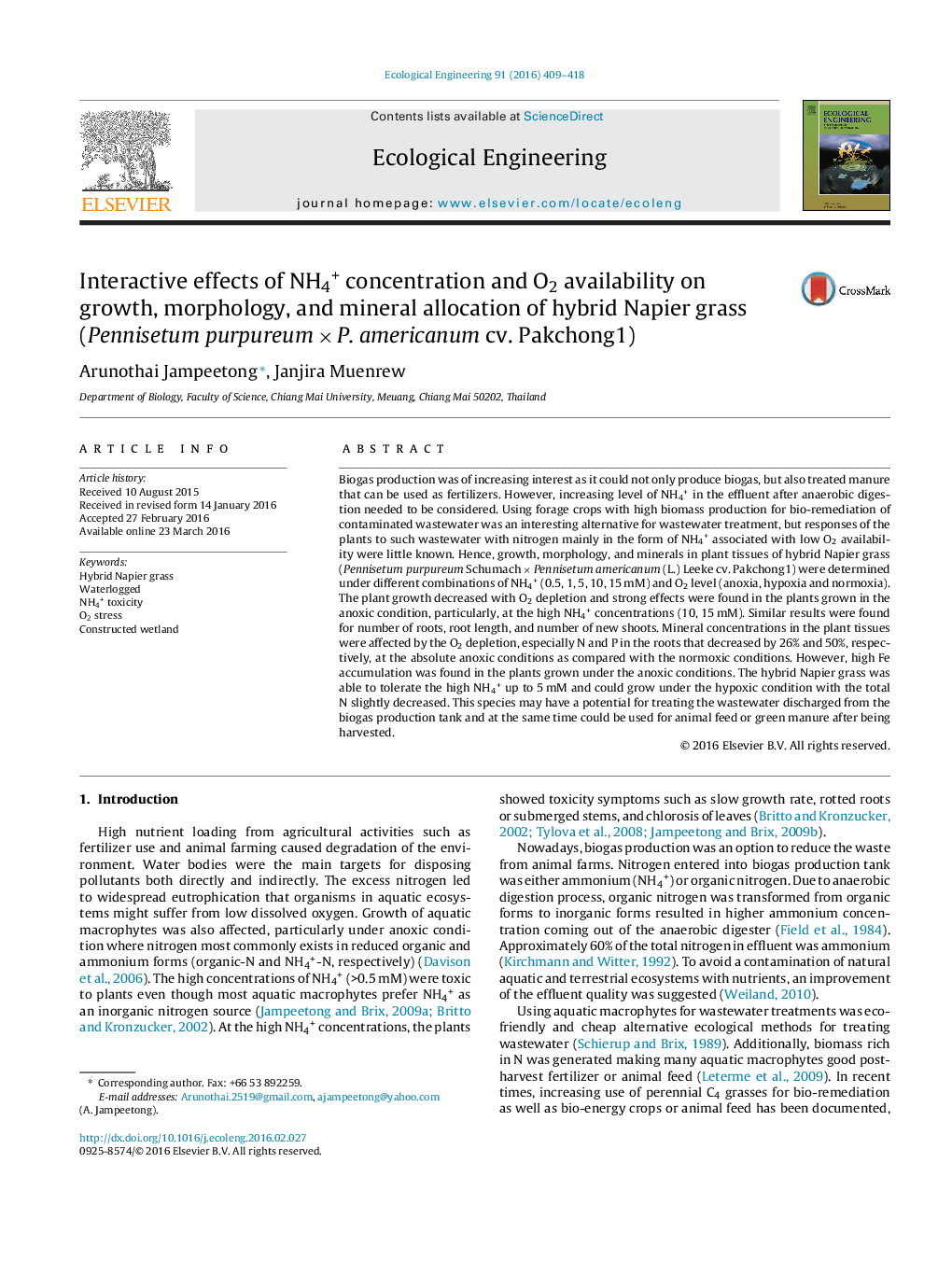| Article ID | Journal | Published Year | Pages | File Type |
|---|---|---|---|---|
| 6301363 | Ecological Engineering | 2016 | 10 Pages |
Abstract
Biogas production was of increasing interest as it could not only produce biogas, but also treated manure that can be used as fertilizers. However, increasing level of NH4+ in the effluent after anaerobic digestion needed to be considered. Using forage crops with high biomass production for bio-remediation of contaminated wastewater was an interesting alternative for wastewater treatment, but responses of the plants to such wastewater with nitrogen mainly in the form of NH4+ associated with low O2 availability were little known. Hence, growth, morphology, and minerals in plant tissues of hybrid Napier grass (Pennisetum purpureum Schumach Ã Pennisetum americanum (L.) Leeke cv. Pakchong1) were determined under different combinations of NH4+ (0.5, 1, 5, 10, 15 mM) and O2 level (anoxia, hypoxia and normoxia). The plant growth decreased with O2 depletion and strong effects were found in the plants grown in the anoxic condition, particularly, at the high NH4+ concentrations (10, 15 mM). Similar results were found for number of roots, root length, and number of new shoots. Mineral concentrations in the plant tissues were affected by the O2 depletion, especially N and P in the roots that decreased by 26% and 50%, respectively, at the absolute anoxic conditions as compared with the normoxic conditions. However, high Fe accumulation was found in the plants grown under the anoxic conditions. The hybrid Napier grass was able to tolerate the high NH4+ up to 5 mM and could grow under the hypoxic condition with the total N slightly decreased. This species may have a potential for treating the wastewater discharged from the biogas production tank and at the same time could be used for animal feed or green manure after being harvested.
Keywords
Related Topics
Life Sciences
Agricultural and Biological Sciences
Ecology, Evolution, Behavior and Systematics
Authors
Arunothai Jampeetong, Janjira Muenrew,
